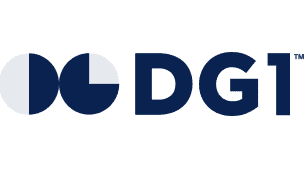According to this 2016 Econsultancy report (which included more than 1,000 professionals in e-commerce, marketing and digital), one of the highest priorities was customer segmentation – 72% of participants said that they use their customer data for segmentation. We already know that every customer has individual behavioral patterns, needs, and preferences, so that shouldn’t come as a surprise. But it is almost impossible to cater to each customer based on their individual preferences.
Profitable Clients
As a retailer, how can you make sure you’re engaging with your most valuable clients? Today’s market is oversaturated and competitive with customers conducting extensive online research, favoring discounts, and switching between brands. In a market that is consumer-driven and consumer-centric, how can brands increase customer loyalty and deliver maximum profitability? Thanks to tools that allow brands to segment their customers, they can understand which of them should be developed and how by using the power of data and analytics.
The answer lies in data-driven actionable insight.
1. Customer Segmentation
To find out who your most profitable clients are, you should first profile your entire customer base to determine who they are and what they like. That involves grouping your clients into shared traits or characteristics that should include sales behavior and socio-demographic factors. Once you gain a clear picture of your different customers, you can analyze who is buying what and who is spending the most.
2. 80/20 Marketing Rule Analysis
The 80/20 Marketing Rule says that 80% of one’s sales come from 20% of their customers. Brands can drive profitability by identifying that 20% of customers, upselling to them, and finding others that look and behave like them. You need to analyze your customer segments by value to build a picture of the most valuable customers. That customer insight will, for example, help you adjust your targeting strategy to include communication channels that would directly engage with that customer segment.
3. Customer-Product Analysis
Analyze your customer data continuously to understand which clients buy which products or services. If you notice a pattern among types of customers that buy particular products or services, it will help you tailor different marketing strategies to reach out to specific audiences. So, if your customers are brand-led or always pay full price, offering a discount might devalue your price point or brand. Save these promotions for buyers that only make their purchases upon receiving special offers.
4. Market Penetration Analysis
Thanks to various analytics tools, you can profile your most profitable customers and map them against the rest of the population. It will allow you to size your potential market opportunity. For example, if an area with a high density of your ideal client is low in customer numbers, you can drive sales by increasing spending. Also, by mapping your most profitable customers and overlay your ideal customer density, you can see in which areas you have low penetration. Online businesses can use this to understand where they should build brand exposure and awareness.
To identify and cater to your most profitable clients, you will have to equip yourself with the right tools specifically designed to assist e-commerce retailers. Data analytics is essential when it comes to segmenting customers, understanding their different needs and preferences, and developing different ways of communication.
DG1 users get unrestricted and unlimited access to their business data (among many other platform features). Our all-in-one platform solution comes equipped with the tools required to segment your clients by profitability. Being integrated with a marketing tool, you can use it to communicate with your most profitable clients via different channels. Get started with DG1 today!
Tags: customer segmentation, analysis, customer data, ideal client


